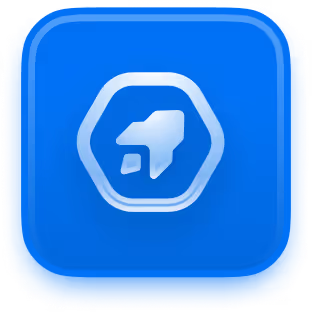-min.jpg)
Personalizing Cold Email Outreach for B2B vs. B2C

Whether you're engaging with fellow businesses (B2B) or reaching out to individual consumers (B2C), the key lies in tailoring your approach to suit their unique needs and preferences.
Personalized emails boost click-through rates by 14% and conversions by 10%.
These aren't just numbers; they represent real opportunities to engage and convert.
Receiving an email that speaks directly to your interests and concerns—it feels like a friend reaching out, doesn't it?
That's the power of personalization.
Whether you're addressing pain points in a B2B context or offering solutions in a B2C setting, relevance is key.
Let's explore how to adapt content personalization for cold email outreach to resonate with both B2B and B2C audiences.
What is Content Personalization?
Have you ever received those emails that feel like they're meant for anyone and not just you?
Yeah, they're pretty dull.
That's where content personalization for cold emails makes all the difference!
Content personalization is when the sender of an email tries to make the email feel more tailored to the recipient.
Instead of just blasting out the same message to everyone, they might mention something specific about you or your interests.
For example, let's say you signed up for a newsletter about cooking. A finely tailored cold email could begin with, "Hello [Your Name], we've observed your enthusiasm for experimenting with new recipes!" Notice the personalized touch and how it resonates with you.
Personalized emails lead to higher open rates and click-through rates. Personalized subject lines resulted in a 26% higher open rate compared to non-personalized ones.
.jpg)
Benefits of Content Personalization in Cold Email Outreach
Imagine you're getting a bunch of emails every day. Most of them are just generic stuff, not speaking to you personally.
But then, there's this one email that catches your eye. It's like it knows you! It talks about things you're interested in and feels like it's just for you.
That's the magic of content personalization in cold email outreach!
Here are some benefits:
- Higher Open Rates
When an email feels like it's meant for you, you're more likely to open it. Personalized emails have 29% higher open rates.
- Better Engagement
When people feel like you understand them, they're more likely to engage with your email. That means they'll click on links, reply to your message, or take whatever action you want them to take.
- Increased Conversion Rates
Ultimately, the goal of sending cold emails is to get people to do something, like sign up for your service or buy your product. Personalized emails have been shown to increase conversion rates by up to 10%.
- Builds Relationships
Personalization shows that you've taken the time to get to know the person you're emailing. It builds trust and makes them more likely to see you as a real person, not just another sales pitch.
- Saves Time and Effort
It might seem like personalizing each email would take a lot of time, but with the right tools and strategies, it can save you time in the long run. Plus, the results are worth it!
Personalization isn't just a nice-to-have—it's a must-have if you want your cold email outreach to be successful.
.jpg)
Difference Between B2B vs B2C Audience
B2B stands for Business-to-Business, while B2C stands for Business-to-Consumer.
B2B audiences are other businesses. These could be big companies or small businesses like yours. They're usually looking for things to help them run their own business better, like software, services, or supplies.
On the other hand, B2C audiences are regular people like you and me. They're just looking for stuff that makes their lives easier or more fun. Think clothes, gadgets, food, and entertainment.
Here are some key differences between the two:
- Decision-makers
In B2B, the people you're trying to sell to are usually part of a team or company.
They might have to get approval from their boss or follow certain rules before buying something.
In B2C, it's usually just the person themselves deciding to buy.
- Needs vs. Wants
B2B audiences are usually looking for things they need to help their business run smoothly.
They're less likely to be swayed by flashy ads or the latest trends.
B2C audiences, on the other hand, are more driven by wants and desires.
They're looking for things that will make them happy or improve their lives in some way.
- Relationships
B2B sales often involve building long-term relationships with clients.
It's not just about making a sale—it's about providing ongoing support and value.
B2C sales can be more transactional, with less focus on building relationships.
B2C e-commerce sales worldwide reached $4.2 trillion in 2020, compared to B2B e-commerce sales of $7.7 trillion.
This shows that both markets are huge, but B2C tends to be more focused on individual consumers and their needs, while B2B is more about businesses helping other businesses.
.jpg)
Strategies for Personalizing Content in B2B Email Outreach
Here are strategies for personalizing content in B2B email outreach:
- Tailoring Messaging to Target Company's Industry
This means making sure your message speaks directly to the kind of business you're reaching out to.
For example, if you're selling software to a healthcare company, talk about how your product can help with things like patient management or data security.
- Addressing Specific Pain Points and Challenges Faced by Businesses
Every industry has its own set of problems, so it's important to show how your product or service can solve them.
Maybe you offer a solution that saves time or money, or maybe it helps businesses stay competitive in a fast-changing market.
- Using Professional Language and Tone
In B2B outreach, it's important to come across as knowledgeable and trustworthy.
Avoid slang or overly casual language, and make sure your tone matches the level of professionalism you'd expect from a business partner.
- Highlighting ROI and Business Benefits
Businesses want to know what's in it for them.
Make sure your messaging clearly explains the return on investment (ROI) they can expect from using your product or service.
This could include things like increased revenue, reduced costs, or improved efficiency.
- Providing Case studies and Customer Feedback
Real-life examples are powerful tools in B2B outreach.
Share success stories from businesses similar to your target audience, showing how they benefited from working with you.
Customer feedback and case studies add credibility and help businesses see the value you can provide.
65% of B2B buyers say that vendor-related content has a significant impact on their decision-making process.
.jpg)
Strategies for personalizing content in B2C outreach
Here are strategies for personalizing content in B2C email outreach:
- Understanding Consumer Preferences and Behavior
This means knowing what your target audience likes, dislikes, and how they behave.
For example, if you're selling fashion items, you'll want to tailor your messaging and products to match current trends and styles that appeal to your audience.
- Segmenting Your Audience
Not all consumers are the same, so it's important to divide them into smaller groups based on factors like demographics, interests, or buying behavior.
This allows you to create more targeted and personalized content for each segment.
- Personalizing Product Recommendations
Use data about your customer's past purchases or browsing history to suggest products they might be interested in.
For example, if a customer bought a pair of shoes, you could recommend matching accessories or similar styles.
- Creating Engaging and Visually Appealing Content
In B2C outreach, consumers are often drawn to content that's visually appealing and easy to digest.
Use eye-catching images, videos, and interactive elements to capture their attention and keep them engaged.
- Including storytelling and Emotional Appeal
Consumers are more likely to connect with brands that tell compelling stories and evoke emotions.
Share stories about how your product or service has made a difference in people's lives, or use emotional appeals to tap into their desires and aspirations.
Whether it's B2B or B2C outreach, With Success.ai unlimited email outreach tool to send unlimited emails and break free from constraints, elevate your campaigns and witness unparalleled engagement and conversions.
57% of consumers are willing to share personal data in exchange for personalized offers or discounts.
.jpg)
Best Practices for Effective Content Personalization
Here are some additional best practices for effective content personalization:
- Focus on Relevance
Ensure that the personalized content you create is relevant and valuable to your audience.
Tailor your messaging to address their specific needs, interests, and pain points to increase engagement and conversions.
With Success.ai's AI email writer, you can effortlessly craft tailored messages that resonate with your audience, boosting engagement and driving conversions.
It's the perfect tool to elevate your email marketing strategy and deliver impactful communication that drives results.
- Utilize Real-Time Data
Incorporate real-time data and insights to deliver personalized content that is timely and in this situation relevant.
For example, use browsing behavior or recent interactions to actively adjust the content displayed to each user.
- Personalize the Customer Journey
Map out the customer journey and identify key touchpoints where personalized content can make a difference.
From initial awareness to post-purchase support, personalize the experience at each stage to guide users toward conversion and foster long-term loyalty.
- Leverage User-generated Content
Encourage user-generated content such as reviews, and social media posts to add genuineness and credibility to your personalized campaigns.
Including real-life experiences from satisfied customers can help build trust and influence purchasing decisions.
- Optimize for Mobile
With the increasing prevalence of mobile devices, ensure that your personalized content is optimized for mobile viewing.
Design responsive emails, websites, and ads that provide a seamless and engaging experience across all devices.
- Measure and Analyze Results
Track key performance metrics to assess the effectiveness of your personalized content initiatives.
Analyze data such as conversion rates, engagement metrics, and customer feedback to identify areas for improvement and refine your personalization strategies over time.
- Stay Agile and Adaptive
The digital landscape is constantly evolving, so be prepared to adapt your personalization strategies to meet changing consumer preferences and market dynamics.
Stay agile and experiment with new techniques and technologies to stay ahead of the curve.
By including these additional best practices in your content personalization efforts, you can create more impactful and engaging experiences for your audience, driving improved outcomes for your business.
.jpg)
Conclusion
Content personalization in email outreach customizes messages for individuals, making them feel valued.
It significantly improves open, engagement, and conversion rates.
In business-to-business (B2B) email outreach, it addresses specific industry needs and offers tailored solutions.
For business-to-consumer (B2C) email outreach, it connects with consumer preferences and emotions.
Effective personalization involves relevance, real-time data application, and continual adaptation.
Email outreach becomes more impactful by ranking these elements, fostering connections, and driving successful outcomes.
Elevate your email marketing game by using our Success.ai for sending personalized emails with hyper-personalized outreach to skyrocket your business.


Try Success.ai No credit card required
Unlock unlimited access to 700M+ B2B leads, with unlimited email sending & warm-up. Supercharge your growth now with Success.ai!
















.avif)


.avif)





.avif)






.avif)










.jpg)

-min.jpg)









.avif)
.svg)
.avif)

